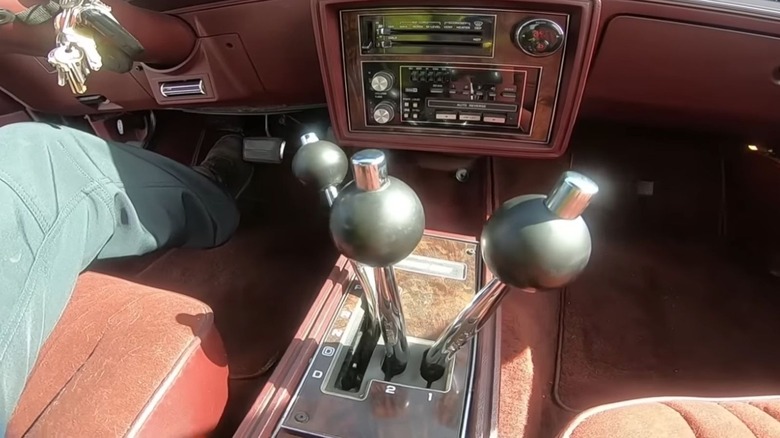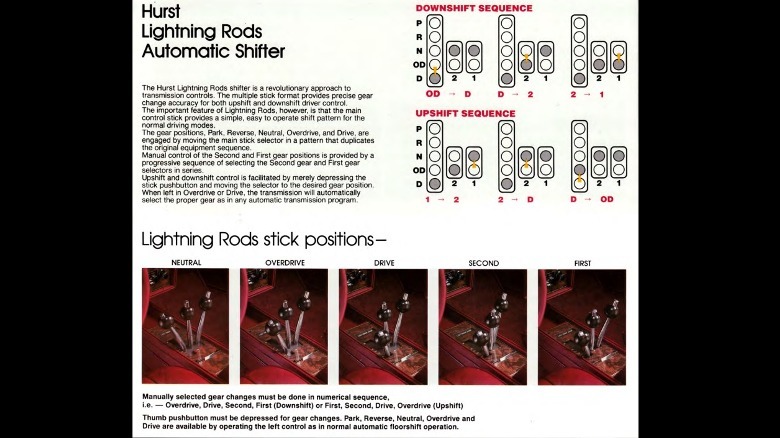Here's How Hurst Lightning Rod Shifters Worked
In 1983, Oldsmobile teamed up with Hurst — the world famous company known for its gear shifters — to unleash a limited edition G-body Cutlass with an automatic transmission. It wasn't Hurst's first collaboration with Detroit automakers, having done so several times (mostly with Oldsmobile), starting all the way back in 1968 with the Oldsmobile 442.
These were equipped with quick sequential "Dual Gate" shifters, a method taken from the drag strip, where drivers found moving the stick shifter in a straight line was faster and more precise than following the standard "H" pattern of your typical manual transmission.
The '83 H/O was both a continuation of that line and a heartfelt nod to the American muscle cars of yore that died off inauspiciously the decade before; due to a culmination of events led by a global oil crisis, new emission standards and a national speed limit cap of 55 miles per hour.
A new trick was needed — something that looked wild and wholly unexpected — to draw in a new breed of performance enthusiast. So Hurst came up with Lightning Rods, a triad of gear shifters that took the idea of the Dual Gate shifter and, believe it or not, made shifting more convoluted than it ever needed to be.
That said, it sure looked cool. Remember, this was the 1980s, where things we thought were cool then — like big hair and bright neon clothing — don't hold up so well today. So, how did this multi-tentacled beast work?
Riding the lightning
Three "Lighting Rods" sprung from the center console, which allowed the driver to progress through each gear — one stick shifter at a time. The process was so outside the box that a supplemental foldout was given out along with the owner's manual showing how to operate the quirky Lightning Rods (see image below).
We'll start with the stick on the far left and closest to the driver since it's the most standard of the lot and was used to engage Park, Reverse, Neutral, Overdrive, and Drive. Hopping over to the far right (and furthest away from the driver) was the stick that shifted gears from first to second gear. The third (middle) stick took it from second into third gear.
Everyday driving required leaving the middle and far right shifters in the forward position while the main shifter next to the driver was slid into whatever mode was needed. If the driver felt frisky — and wanted some faux "manual" shifting action — they engaged the other two sticks.
The car was in first gear with all three sticks pulled back/at the bottom. As RPMs revved higher, the far right shifter was moved forward at the appropriate time from first into second gear. The same process was repeated for the middle shifter when moving from second to third. Moving the closest shifter from Drive into Overdrive put the car's transmission into its highest gear.
The complete manual transmission experience was achieved by downshifting in the reverse order. Don't worry about shifting out of order or into park while driving because the system quite literally wouldn't allow that to happen.

